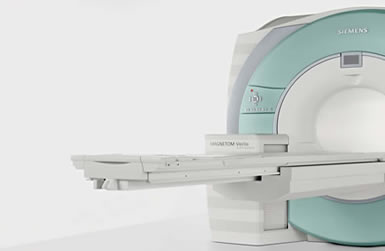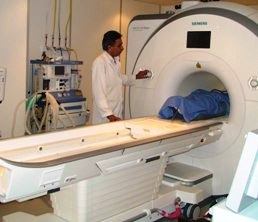|
Controversy has surrounded the
craniopharyngiomas as it has almost no other tumor
affecting the brain; the origin, natural history,
operative removability, response to radiation, and
optimal therapy of the lesion have all been topics of
debate. Many of these questions remain unresolved, and
the conclusions must be regarded as only tentative.
 Origin
Origin
At the end of the nineteenth century,
pathologists were intrigued by a strange group of
epithelial tumors encountered above and within the sella
turcica. Mott and Barrett, in 1899, postulated that
these tumors might arise from the hypophyseal duct or
Rathke's pouch. This amazingly prescient theory, based
on three cases of third-ventricular tumor, continues to
be widely held. Histologic characteristics of these
tumors were well described in 1904 by Erdheim, who
pointed out similarities between craniopharyngiomas and
adamantinomas, tumors known to be primitive neoplasms of
buccal origin. He thought this close resemblance proved
that craniopharyngiomas arose from ectoblastic remnants
of Rathke's duct. In addition, the anterior wall of
Rathke's pouch forms both the pars tuberalis and the
anterior lobe of the pituitary, the most common sites
for craniopharyngiomas. Since that time,
craniopharyngiomas have been found along the path of
development of Rathke's pouch from the pharynx to the
floor of the sella, as well as above and within the
sella.
However, while craniopharyngiomas and adamantinomas have
a similar appearance, the histologic picture differs
greatly between a Rathke's cleft cyst and a
craniopharyngioma, although these entities are
postulated to have a common origin. The Rathke's cleft
cyst may be a simple cystic enlargement and may lack the
changes induced by neoplastic transformation found in
craniopharyngiomas.
Some investigators have demonstrated histologic
differences between adult and childhood
craniopharyngiomas that might indicate separate origins.
They stress that almost half the adult tumors are made
up of squamous epithelium, often with a papillary form,
without palisading or other adamantinomatous
characteristics of the childhood tumor. These
differences are not confirmed in some series. In one
series 17 percent of patients had the papillary type of
tumor; these patients ranged in age from 26 to 54 years.
In the same series, adamantinomatous tumors were found
in patients ranging in age from I to 69 years. Other
workers have tried to predict the behavior and clinical
likelihood of recurrence on the basis of these
pathologic differences and have found that both the
outcome of surgery and the recurrence rate were slightly
better for papillary tumors than for the
adamantinomatous variety.
Squamous epithelial rests in the hypophysis were
described in autopsy material by Carmichael more than 70
years ago. However, these cell rests are found in only 3
percent of neonates and are found with increasing
frequency in each succeeding decade. This finding
suggests that an embryonic origin need not be postulated
for such cells, which may appear later in life because
of cellular alteration or metaplasia of pituitary cells,
which are also of ectodermal origin.
 Incidence
Incidence
Craniopharyngiomas are variously reported to constitute
between 2.5 and 4 percent of all brain tumors. Since
almost half these tumors occur in childhood, their
incidence in children is higher; they constituted 9
percent of Matson' s series of childhood tumors, in
which craniopharyngioma was the most common nonglial
tumor. When the differential diagnosis is limited to
tumors of the sellar-chiasmatic region,
craniopharyngiomas constitute a majority in children (54
percent) but only 20 percent in adults. However,
craniopharyngiomas may become symptomatic at any age,
with the oldest in this series being 71 at the time of
operation. The tumor occurs with equal frequency in both
sexes throughout life. Although a male preponderance in
children has been reported, it is not supported by other
reports of large series of children with equal sex
distribution.
 |



 What’s New
What’s New

 Origin
Origin